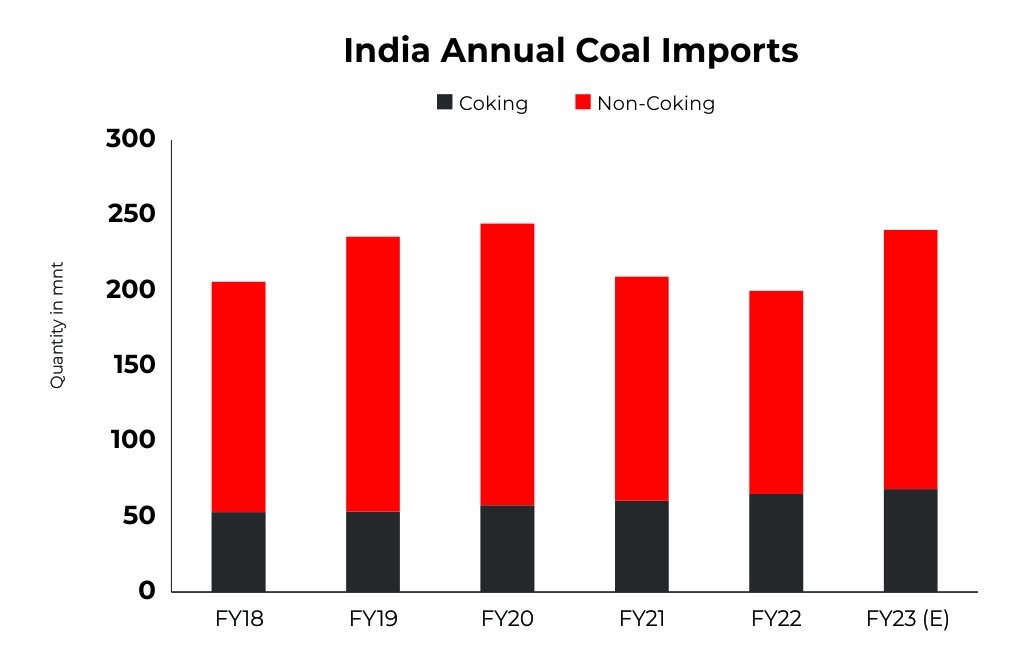Introduction:
India, with its burgeoning economy and ever-growing energy demands, has long relied on coal as a primary source of power. The Indian coal sector has played a pivotal role in shaping the nation’s energy landscape. As we step into the 21st century, it becomes imperative to examine the Indian Coal Outlook, exploring the challenges, innovations, and sustainable pathways that will define its future.
Historical Perspective:
Coal has been a cornerstone of India’s energy mix for decades. The country is home to one of the world’s largest coal reserves, providing a reliable and cost-effective source of energy for various sectors, including power generation, steel production, and cement manufacturing. However, this reliance on coal has come at a cost, with environmental concerns, air pollution, and carbon emissions posing significant challenges.
Challenges and Environmental Concerns:
The Indian coal industry faces a dual challenge – meeting the escalating energy demand while addressing environmental and sustainability issues. The environmental impact of coal mining and combustion has been a subject of global concern. From deforestation to air and water pollution, the consequences of unchecked coal usage are evident.
To combat these challenges, the Indian government has been actively promoting cleaner and more sustainable alternatives. The National Clean Air Programme (NCAP) and the commitment to reduce carbon intensity are steps in the right direction, signaling a shift towards a more environmentally conscious energy future.
Innovations in Coal Technology:
The 21st century has witnessed significant strides in coal technology aimed at mitigating environmental impacts. Clean coal technologies, such as carbon capture and storage (CCS), are gaining prominence. These technologies aim to capture carbon dioxide emissions from coal-fired power plants, preventing them from entering the atmosphere.
Additionally, advancements in ultra-supercritical technology have improved the efficiency of coal-fired power plants, reducing both carbon emissions and fuel consumption. These innovations reflect a commitment to balancing energy needs with environmental sustainability.
Renewable Integration:
Recognizing the need for a diversified energy portfolio, India is increasingly investing in renewable energy sources. The government’s ambitious targets for solar and wind energy deployment aim to reduce the country’s dependence on coal and other fossil fuels.
As the cost of renewable technologies continues to decrease, solar and wind power are becoming more competitive with traditional sources. This shift towards renewables not only aligns with global sustainability goals but also presents economic opportunities for the growth of the green energy sector in India.
Global Cooperation and Policy Reforms:
Addressing the challenges of the Indian coal sector requires collaborative efforts on a global scale. International partnerships, knowledge exchange, and technology transfer can play a pivotal role in accelerating the transition towards cleaner energy solutions. Additionally, policy reforms that incentivize sustainable practices and penalize environmental degradation are crucial for shaping the future of the coal industry.
The “One Nation, One Grid” initiative, which aims to create a seamless power market across India, can facilitate the integration of renewable energy sources into the national grid. Such policies pave the way for a more flexible and resilient energy infrastructure.
Social Impacts and Just Transition:
The transition away from coal must also consider the social implications for communities dependent on the coal industry. A just transition involves ensuring that workers and communities affected by the decline of coal-related activities are not left behind. Skill development programs, alternative employment opportunities, and social safety nets are essential components of a just transition plan.
Economic Considerations:
The economic aspect of the Indian coal outlook cannot be overlooked. While transitioning to cleaner energy sources is vital for sustainability, it is equally important to manage the economic impact on the coal sector and associated industries. Balancing economic growth with environmental responsibility requires thoughtful planning and strategic investments in new industries and technologies.
Conclusion:
The Indian coal outlook in the 21st century is at a crossroads. The challenges posed by environmental concerns and the global shift towards sustainable practices necessitate a comprehensive reevaluation of the country’s energy strategy. The integration of cleaner technologies, promotion of renewable energy, and a just transition for impacted communities are crucial steps toward shaping a more sustainable and resilient energy future for India. As the nation navigates this transition, strategic policy decisions, international collaborations, and technological innovations will play pivotal roles in determining the trajectory of the Indian coal sector.
More market research, advisory consulting services to discover
At Eninrac, we offer a wide range of, advisory consulting solutions, from We put ‘search’ in research to help expand your business with ease. Discover all the possibilities now.


No comments yet